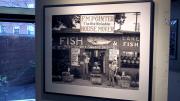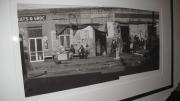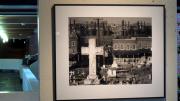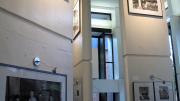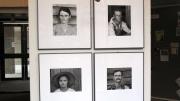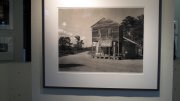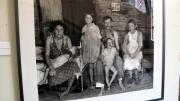Most people know Walker Evans as a craftsman who captured the lives of Great Depression workers and families in evocative, lyrical photographs. But for Christie McDonald, Smith professor of French language and literature and co-master of Mather House, Evans was more than a famous shutterbug.
“Walker Evans and my parents were very dear and old friends,” says McDonald, who grew up in New York City’s West Village neighborhood. “He was a friendly, benevolent uncle figure to me.”
And so, last spring, McDonald contacted longtime friend John T. Hill, executor of the Walker Evans estate, to see if it would be possible to show some of Evans’s works at Harvard. He said yes, and together they have assembled a 50-print exhibit for the Sandra Naddaff and Leigh Hafrey Three Columns Gallery (named for the House’s former co-masters) titled Walker Evans: Before and After the FSA.
Many of the photos were taken during Evans's time working for the Farm Security Administration, which was created as part of President Franklin Roosevelt’s war on poverty under New Deal legislation. (View images of Evans’s work from the Library of Congress’s holdings.) But the exhibit also highlights Evans’s breadth as a photographer: images reveal his love of literature, especially French Symbolist poets, and the inspiration he found in daily objects such as postcards, tabloids, and newsreels.
Several photographs come from a three-year study Evans did of people on the New York City subway (he snapped unsuspecting train passengers with a hidden camera); others show his fascination with signs and found objects.
Hill, a colleague of Evans’s during his time as a professor of photography at Yale, has produced five books on the photographer, including Walker Evans First and Last; Walker Evans At Work; Walker Evans, Havana, 1933; and Walker Evans: The Hungry Eye (awarded the prestigious Prix de Nader in Paris, and the Krasna Krausz Photography Books Award). Hill said the most challenging aspect of organizing the exhibit was putting together a body of work that would be viewed by those who have never heard of Evans, who died in 1975.
“Anytime I am asked to speak about Walker it’s an intimidating prospect,” he said in a talk at the opening of the exhibit. “For those new to Walker Evans, I want them to know he was working against the grain from the very beginning. He was a difficult man, a secretive man, intelligent, and extremely possessive about his ideas. On the other hand, he was very charming, and very vulnerable.”
For McDonald, the exhibit is a chance for the Harvard community to get a glimpse of a man she knew well, and for her and Hill to continue a relationship important to their families: “My father, John, was an editor at Fortune magazine, so he and Walker [who was a Fortune photographer at the time] were colleagues and became great friends. My mother, Dorothy Eisner, was a painter, and she and Walker admired each other very much. There were many social events, and Walker did several portraits of my father." McDonald recalled that her mother painted Evans in the 1940s, in a playful scene in which the photographer assumed the habits of the painter herself: the picture showed Evans painting, sitting with hand on hip in the characteristic pose of McDonald's mother. That painting (now owned by the Metropolitan Museum), said McDonald, "was really something special.”
